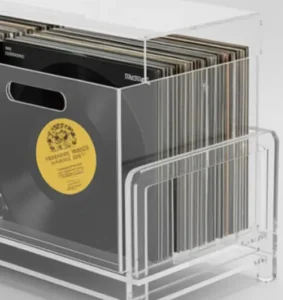Attache vs Briefcase: What’s the Difference Between the Two?

When it comes to professional, portable cases, understanding the difference between an attache and a briefcase can help you choose the best option for your needs.
While both are classic staples for carrying documents, laptops, and essential work items, they have distinct characteristics in function, structure, and style that make each unique.
What is an Attache Case?
An attache case is a slim, hard-sided case typically used for carrying important documents, laptops, and essential work items.
Often featuring a hinged, rectangular design, attache cases have become popular among professionals due to their sleek appearance and structured form.
Generally, an attache case opens flat, with compartments for organization, and closes with secure latches or locks.
Its compact design makes it ideal for short meetings or minimal storage needs.
What is the Use of an Attache Case?
The primary use of an attache case is to hold documents, laptops, and other essentials for business or personal meetings.
It’s especially suitable for professionals who prefer a minimalist, organized way to carry items such as contracts, tablets, or stationery without the bulk of larger cases.
The attache’s design, combined with its sturdy build, provides easy access to documents while keeping them safe and unwrinkled.
Attache cases are commonly used in industries such as law, finance, and consulting, where a refined, professional look is beneficial.
What is a Briefcase?
A briefcase is a broader category of cases, generally rectangular and larger than an attache, used to carry a variety of items, from documents to laptops and even smaller items like phones, keys, or notebooks.
Briefcases come in various designs, including soft-sided and hard-sided, and often have a handle on top for easy carrying.
Some briefcases may even have straps for additional support, making them versatile for longer journeys or more items.
What is the Use of a Briefcase?

Briefcases serve as all-purpose cases designed to carry a range of items necessary for daily business or personal travel.
With a larger capacity than an attache, a briefcase is ideal for professionals who require more storage, such as salespeople, architects, or business travelers.
Many modern briefcases include padded compartments for laptops, additional pockets for cables and accessories, and secure closures.
They are also suitable for keeping documents neat, with space for additional items such as water bottles, power banks, and personal accessories.
Attache vs Briefcase: A Glimpse of History
The attache case originated in France and was initially associated with diplomats or “attachés,” who used them to carry important documents securely.
The name itself derives from this professional role.
Meanwhile, the briefcase’s history is rooted in law, where professionals needed a practical means of carrying legal briefs—hence the name “briefcase”.
Over time, both items evolved in design and function, adapting to meet the needs of modern-day professionals in many different fields.
What’s the difference between a briefcase and an attache case?
| Feature | Attache Case | Briefcase |
| Function | Primarily for document storage, limited items | Can carry documents, laptops, and other essentials |
| Structure | Hard-sided, opens flat with a hinged lid | Soft or hard-sided, often opens upright with zippers |
| Cost | Generally mid-range to high depending on the materials | Varies widely depending on the style and materials used |
| Durability | Durable, usually rigid frame | Can vary; hard-sided are more durable than soft |
| Availability | Slightly limited in style variations | A wide range of styles, sizes, and designs are available |
| Materials Used | Often leather, metal, or hard plastic | Leather, canvas, nylon, aluminum, or a mix of materials |
| Maintenance | Requires care to avoid scratches on hard surfaces | Soft-sided briefcases may be easier to maintain |
| Pros | Professional, sleek, compact, organized storage | Larger capacity, versatile, available in many styles |
| Cons | Limited space, higher cost for quality cases | Bulkier, potentially heavier, may lack rigidity |
Factors to Consider When Choosing An Attache vs Briefcase
Functionality
Determine what you need to carry and whether the case’s storage capacity will accommodate all items. Attaches are ideal for minimal storage needs, while briefcases offer more space.
Style and Professional Appearance
If a formal appearance is important, attache cases offer a sleek, executive look. Briefcases, however, come in a broader range of designs, from traditional leather to more modern, soft-sided options.
Portability
Consider whether you prefer a lighter, more compact attache for short trips or the versatility of a briefcase with additional storage.
Budget
Attache cases are often more costly due to materials, so if budget is a factor, soft-sided briefcases may offer a more affordable solution.
Durability and Maintenance
Hard-sided cases require care to avoid scuffs, while soft-sided cases may be easier to maintain but potentially less durable.
More Case Comparisons: Suitcase vs Briefcase
| Feature | Suitcase | Briefcase |
| Function | Storage for clothes, shoes, and other travel items | Organized storage for work essentials |
| Structure | Large, often wheeled with handles, deeper compartment | Smaller, typically handheld, with flatter structure |
| Cost | Varies based on size, material, and brand | Generally lower for basic models, higher for luxury |
| Durability | Durable for travel, often weather-resistant | Durable, though varies with materials and structure |
| Availability | Widely available in many styles, sizes, and colors | Readily available, though fewer style variations |
| Materials Used | Hard or soft shell, plastic, nylon, leather | Leather, nylon, metal, and synthetic fabrics |
| Pros | Large capacity, wheels for easy transport | Compact, easy access to documents |
| Cons | Bulky, requires ample storage space | Limited to professional use, less versatile |



